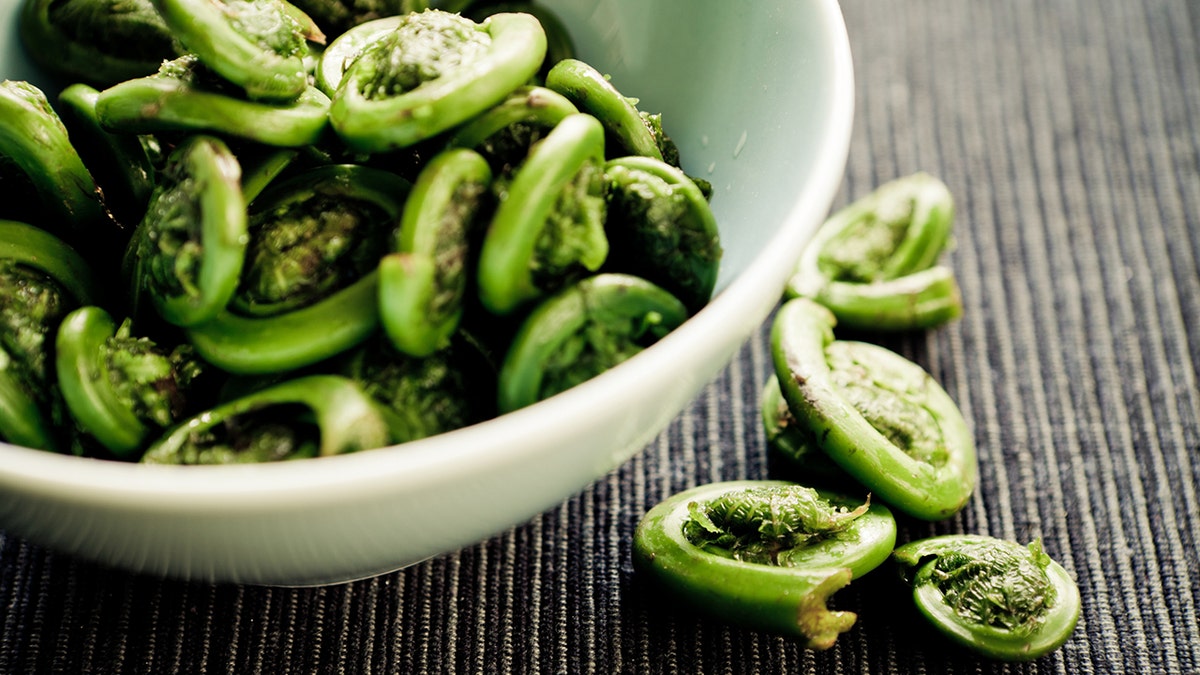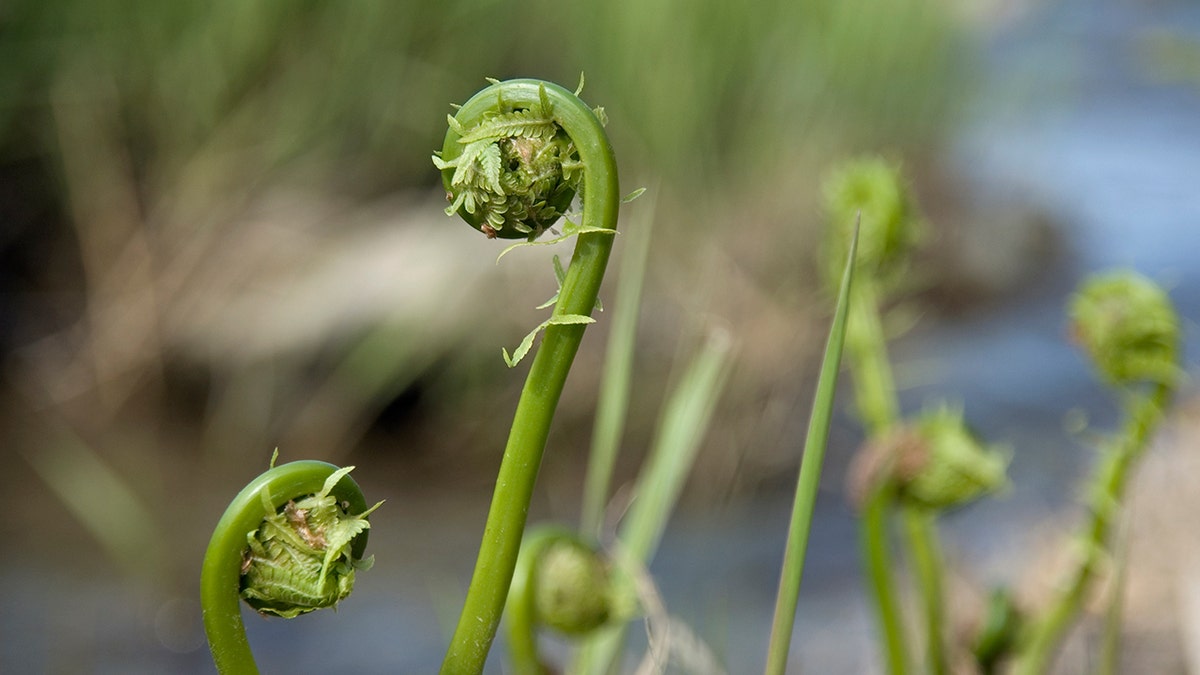
Fiddleheads are one of the season's most desired greens — just make sure you know how to prepare them. (iStock)
For most of us, turkey season is also fiddlehead season. So, while you're tromping the woods — whether the hunting is slow or not — keep your eyes peeled for these ephemeral edibles.
Why? Because they are delicious and because like so many things in spring (including spring), they are here and gone. If you don't grab fiddleheads while they are still fiddleheads, then … well, you get the idea.
A BEGINNER'S GUIDE TO HUNTING MOREL MUSHROOMS
You'll find them along wooded creeks and on riverbanks and in moist woodlands. "Fiddlehead" does not refer to a species of fern, but rather a stage in the plant's development, when the tender stalks have emerged but the fronds have yet to unfurl. If your timing is perfect, you'll find them only a few inches tall and their tips tightly coiled, looking something like the heads — or scrolls — of so many miniature, bright-green fiddles (all buried up to their necks).

Fiddleheads — so called because their tops look like the neck of a fiddle — are best when the stalks have emerged but the fronds have yet to unfurl. (iStock)
Pick only a couple heads from each bunch, and your hotspots will produce year after year. Clean them thoroughly before cooking.
RECIPE: WILD GAME AND BEER PATE
Most sources urge you to fully cook fiddleheads. Here's a handy rhyme to help you remember: "Raw ferns unfurled might make you hurl."
I've never had a problem with al dente ostrich ferns (the most common fiddlehead variety), but that's just me. If you're worried, or inclined to blame me, sauté them for longer or blanch them for a few minutes first. Even cooked through (as long as you don't overcook), they are crunchy and fresh, with a flavor that's sort of between asparagus and green beans, but all its own—and only available now.
THE BEST WAY TO BUTCHER A WILD DUCK
Go get 'em.






